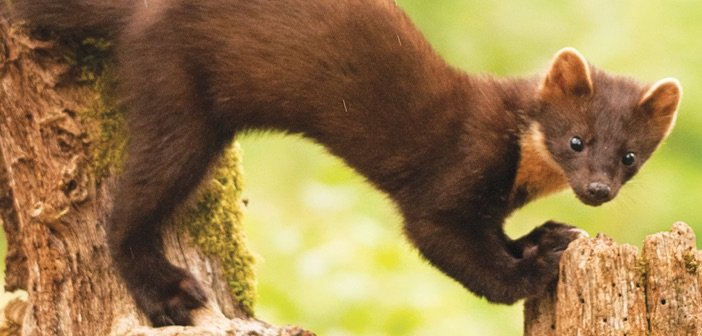You kuna believe how cute the marten is!
Imagine heading into your local pub and ordering a beer,
“Sure,” says the bartender, pushing you a pint. “That’ll be 15 squirrels.”
That is essentially what happens in Croatia. The currency is named for the kuna – a small rodent squirrel-like animal known in English as the marten – harking back to the days when its pelts were equivalent to cash. In fact, the people of the Croatian regions have been calling their currency kuna since the mid-13th century.
Croatians don’t believe that the kuna is particularly adorable, although a quick YouTube or Pinterest search will prove to you its cuteness credentials.
It is rather the sort of animal that wreaks havoc in your basement. My first experience with kunas in the wild was on the rocky island of Cres. Driving home along its very, very narrow roads, the eyes of kunas shine like silver dollars, reflected in the headlights. They crouch on the low stone walls that hem in the roads and stare at you over their shoulders.
In Europe, martens come in a number of varieties, the most populous being the stone (or beech) marten, and the pine marten. On the continent these little guys – rarely bigger than a cat – can cause quite a lot of damage. Being territorial, they mark their area with their scent. This includes marking cars which, unfortunately, are not always stationary. Take your car for a drive, and you may find yourself in the territory of a rival marten. This sends the animals into an absolute frenzy, keen to defend their territory. Martens are known to tear wires, plugs, windscreen wipers, and any plastics to shreds. In Germany this is such a significant problem that insurers offer marten protection.
Cute fact however is that baby martens are called kits. Nawww!

Despite almost-pest status in Europe, martens – cat crainn in Irish – are the rarest wildlife species in Ireland. About 7,000 years ago, it was the second most populous carnivore on the British Isles and Ireland. Now, the stone marten is entirely absent, and the pine marten very rare except in Scotland. It has been, unfortunately, a victim of deforestation and those tempting pelts. Since 2011, the Vincent Wildlife Trust has been working to educate Irish people about how to reduce their impact on pine marten populations. Quite the opposite of being a pest, there are now only 2700 individuals remaining in Ireland.
In the UK, a project to reintroduce pine martens has led to 20 animals successfully being relocated from Scotland to Wales. One of the benefits of increasing marten numbers is to reduce the numbers of invasive grey squirrels. Obviously, there’s still a long way to go before the species reaches its former glory, but conservation work is progressing.
Meanwhile, back in Croatia, we continue to swap kuna for beer.
For more information about martens in Ireland, check out the Vincent Wildlife website.
